Gothic interior design has evolved from its medieval roots into one of the most sought-after aesthetic movements in contemporary American homes. As reported by Rent.com, the resurgence of gothic style coincides with cultural phenomena like My Chemical Romance’s 2025 tour and the reemergence of “e-girl/e-boy” aesthetics, making this darkly romantic style more relevant than ever. Far from the creaky haunted houses of horror films, modern gothic decor blends Victorian opulence with contemporary minimalism to create spaces that exude drama without discomfort.
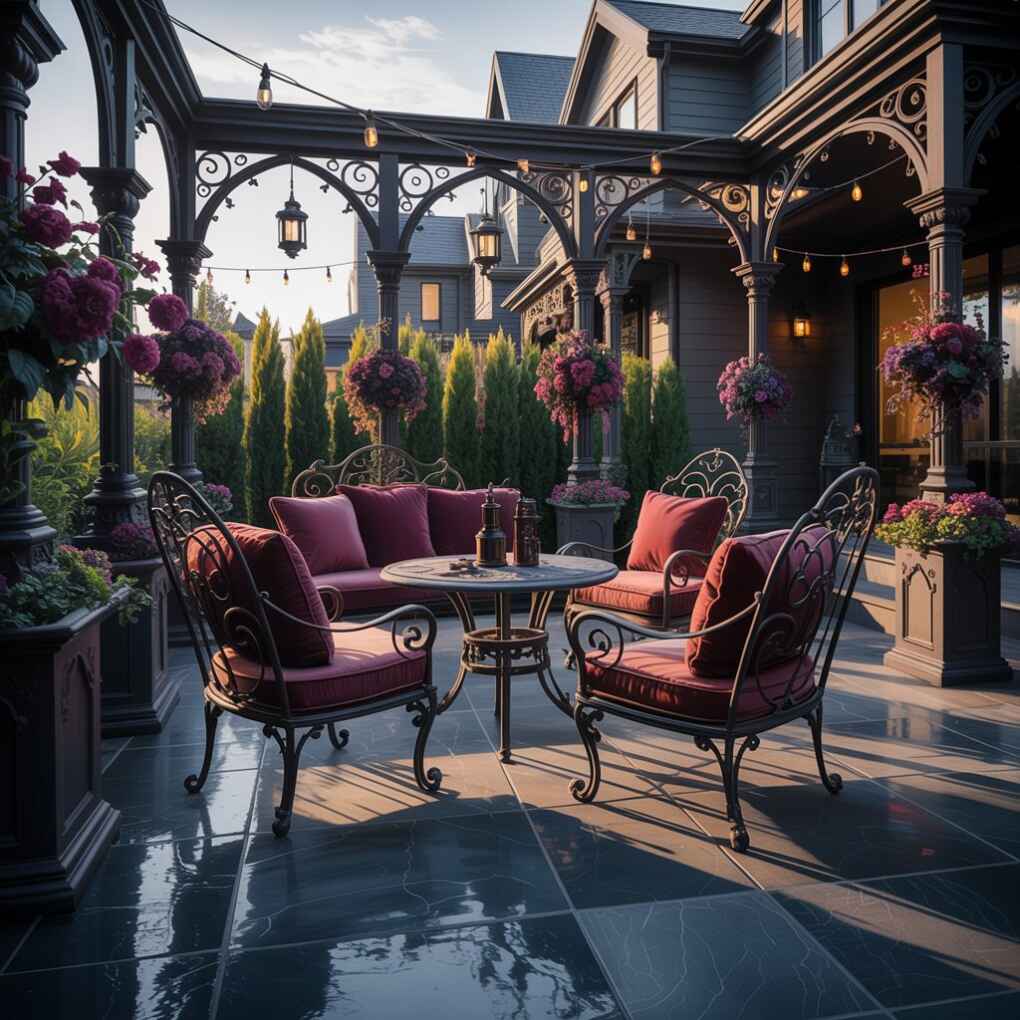
This design philosophy embraces the mystery of shadow and light, transforming ordinary rooms into richly layered sanctuaries where every corner tells a story. According to Architectural Digest, you can incorporate gothic elements without making your home look like the Addams Family manor—proving that darkness and sophistication can coexist beautifully. In this guide, we’ll explore 13 thoughtfully curated gothic home decor ideas that balance moody ambiance with livable elegance, perfect for the discerning American homeowner seeking depth in their design narrative.
1. Deep, Moody Color Palettes
A true gothic home thrives on the depth and mystery that only dark color schemes can provide. Instead of stark black walls, consider sophisticated shades like charcoal, midnight blue, or burgundy that add dimension while maintaining warmth. These colors create the perfect backdrop for highlighting architectural details and statement furniture pieces.
The key is layering different dark tones rather than using a single monochromatic scheme. As noted by HomeDecorFull, this approach prevents the space from feeling flat or oppressive. Consider a living room where deep plum walls contrast with charcoal trim and midnight blue upholstery for a richly nuanced effect that feels luxurious rather than somber.
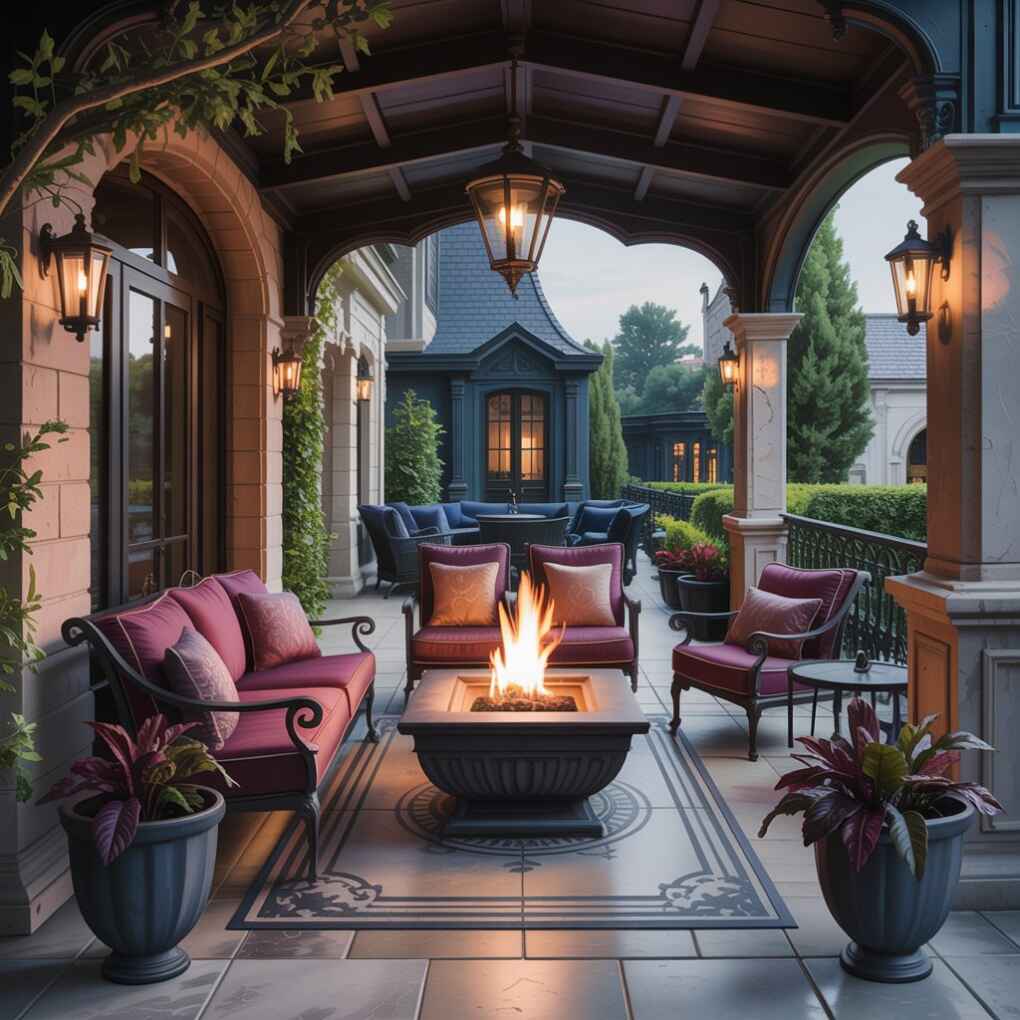
Pro Tip: Test paint colors at different times of day as dark shades can appear dramatically different under natural versus artificial light. Always use eggshell or satin finishes for dark walls to enhance depth through subtle light reflection.
2. Velvet Textures and Rich Fabrics
Velvet remains the undisputed champion of gothic textiles, offering sumptuous texture that catches light in mesmerizing ways. Incorporate velvet in deep jewel tones like emerald, sapphire, or claret for an immediate gothic transformation. A velvet sofa or armchair can serve as the dramatic centerpiece of any room.
TheCoolist highlights how “Velvet Shadows” create instant sophistication by absorbing and reflecting light in complex patterns. Pair velvet with other luxurious textiles like brocade or damask to add layers of texture that invite touch and examination. For a more contemporary take, combine velvet with minimalist furniture silhouettes to balance drama with modernity.

| Fabric Type | Best For | Price Range |
|---|---|---|
| Velvet | Sofas, chairs, drapes | $$$$ |
| Brocade | Accent pillows, upholstery | $$$ |
| Silk | Drapery, bed linens | $$$$ |
| Linen | Layered textures (lighter gothic) | $$ |
3. Gothic Architecture Elements
Incorporate architectural details inspired by medieval cathedrals and Victorian mansions to ground your space in authentic gothic tradition. Pointed arches, ribbed vaults, and flying buttresses can be adapted for modern homes through subtle design choices rather than full structural changes.
Consider adding Gothic-inspired trim around doorways or creating faux stained glass windows with adhesive film. The Rent.com design guide suggests that “inspired by medieval architecture” elements create immediate gothic ambiance without requiring major renovations. These features serve as conversation pieces while establishing the historical foundation of the style.

Pro Tip: If you’re renting, use removable wallpaper with Gothic architectural patterns to create the illusion of authentic stonework or vaulted ceilings.
4. Stained Glass Accents
Stained glass is perhaps the most recognizable element of Gothic design, transforming ordinary light into a kaleidoscope of color. While traditional leaded glass is expensive, modern alternatives like stained glass film or printed glass decals offer accessible solutions for renters and homeowners alike.
Position these elements where they’ll catch natural light—windows, cabinet doors, or even as room dividers. As noted by TheCoolist, the interplay of colored light on dark surfaces creates an ethereal atmosphere that embodies gothic romance without feeling overwhelming.
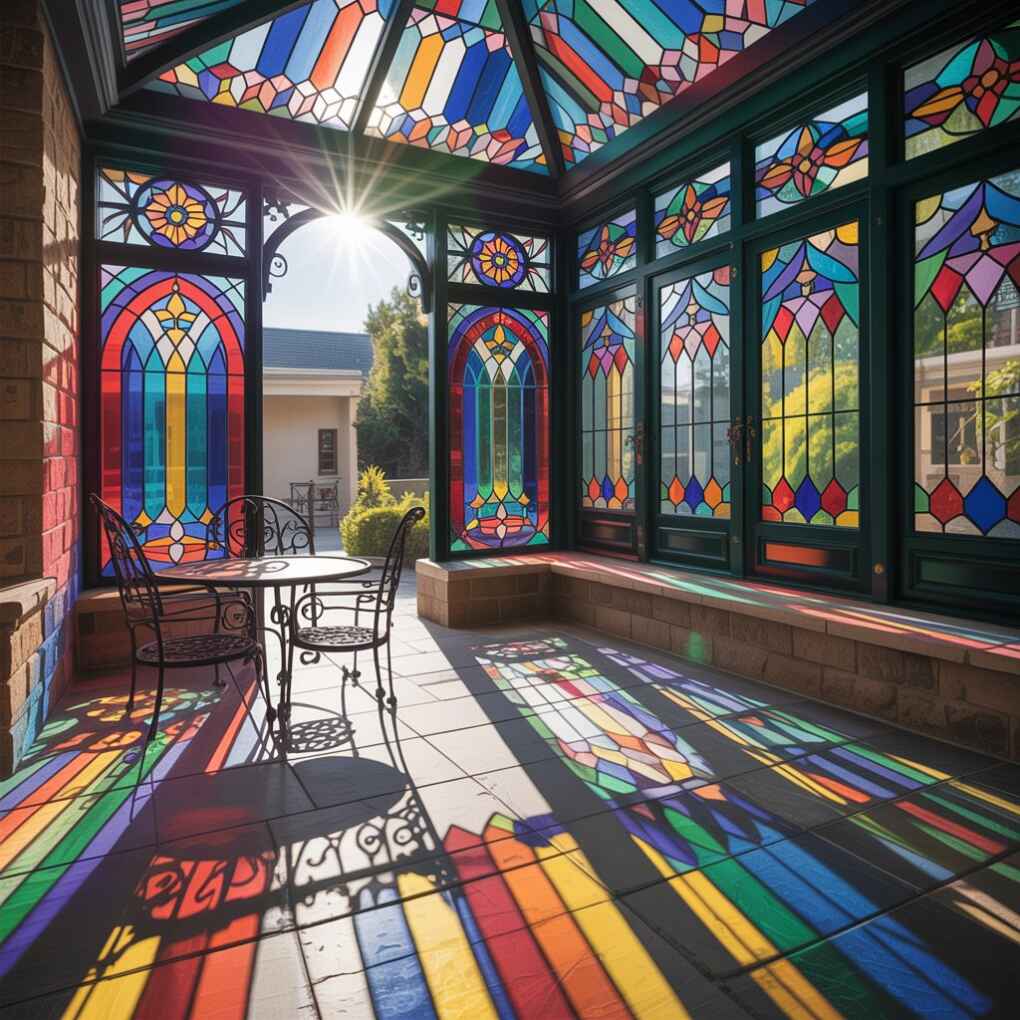
“Stained glass doesn’t need to be limited to windows. Consider it for cabinet doors or as standalone art pieces that cast colored shadows across your dark walls.” — Alex Ion, TheCoolist
5. Ornate Furniture with Dark Wood
Dark wood furniture, particularly pieces with intricate carvings, serves as the structural foundation of gothic interiors. Look for pieces with curved lines, elaborate detailing, and substantial presence that speak to Victorian opulence without feeling dated.
Antique markets and specialty furniture stores often carry authentic pieces, while contemporary manufacturers create modern interpretations with cleaner lines. The key is choosing pieces with personality—furniture that looks like it has a story to tell. Avoid overly ornate designs that might overwhelm smaller spaces.
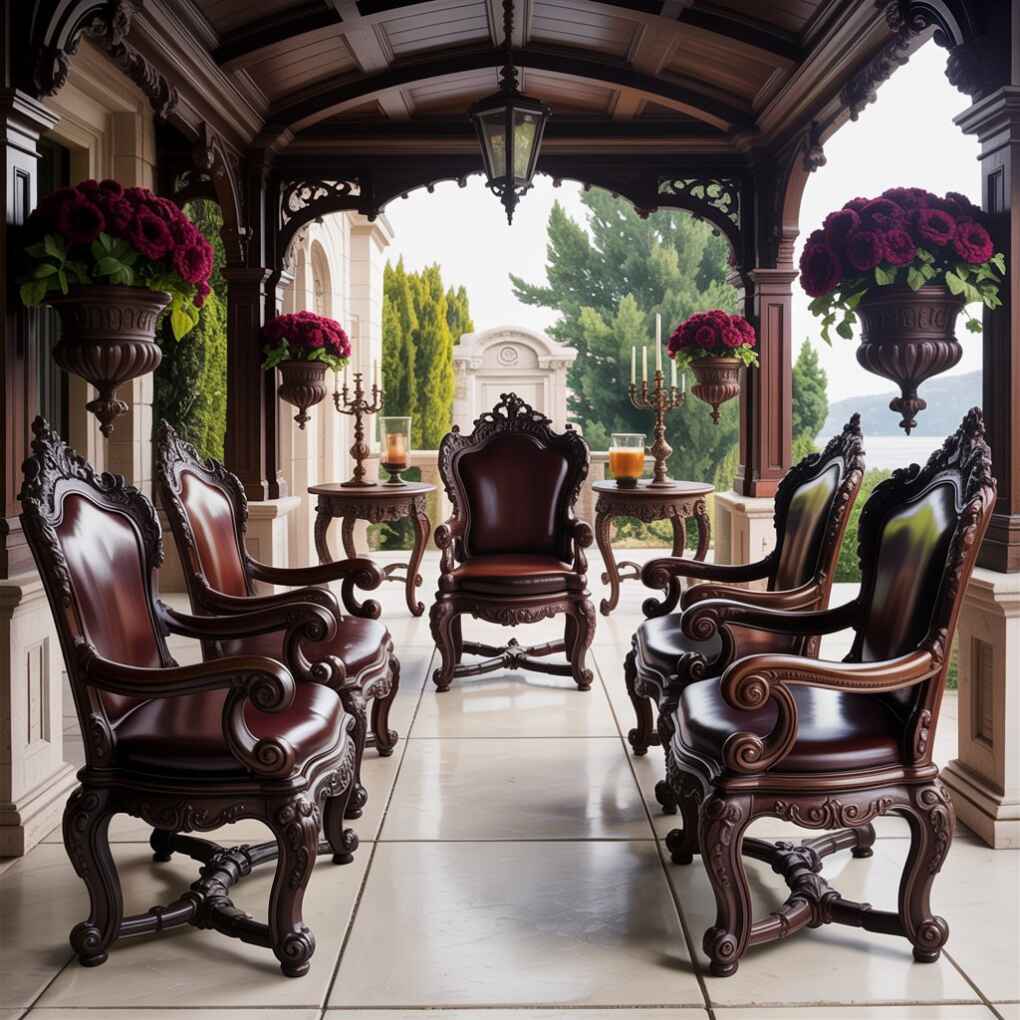
Pro Tip: Refinish existing furniture with dark stains and glazes to achieve the gothic look without purchasing new pieces. A simple coffee table can be transformed with black glaze in recessed areas.
6. Candlelight and Dramatic Lighting
Lighting is crucial in gothic design—candles remain the most authentic and atmospheric option. Create clusters of different sized candles on mantels, tables, and ledges for a flickering, romantic ambiance that evokes medieval castles.
For permanent fixtures, consider wrought iron chandeliers with candle-style bulbs or wall sconces with intricate metalwork. The HomeDecorFull guide emphasizes that “dramatic lighting” is essential for highlighting textures and creating the play of light and shadow that defines gothic spaces.

| Lighting Type | Effect | Best Placement |
|---|---|---|
| Candles | Warm, flickering | Tables, mantels |
| Chandeliers | Grand, dramatic | Dining rooms |
| Sconces | Subtle, ambient | Hallways, bedrooms |
| Floor lamps | Focused, moody | Reading nooks |
7. Macabre Art and Curiosities
Gothic interiors welcome art that embraces the mysterious and sometimes macabre, but should avoid looking like a Halloween store. Opt for vintage anatomical illustrations, dark romantic paintings, or contemporary art that plays with shadow and light.
According to Architectural Digest, the key is curating pieces that reflect your personal taste rather than simply collecting “spooky” items. A single striking piece—a Baroque-style portrait or an intricate anatomical chart—can serve as a conversation starter without overwhelming the space.
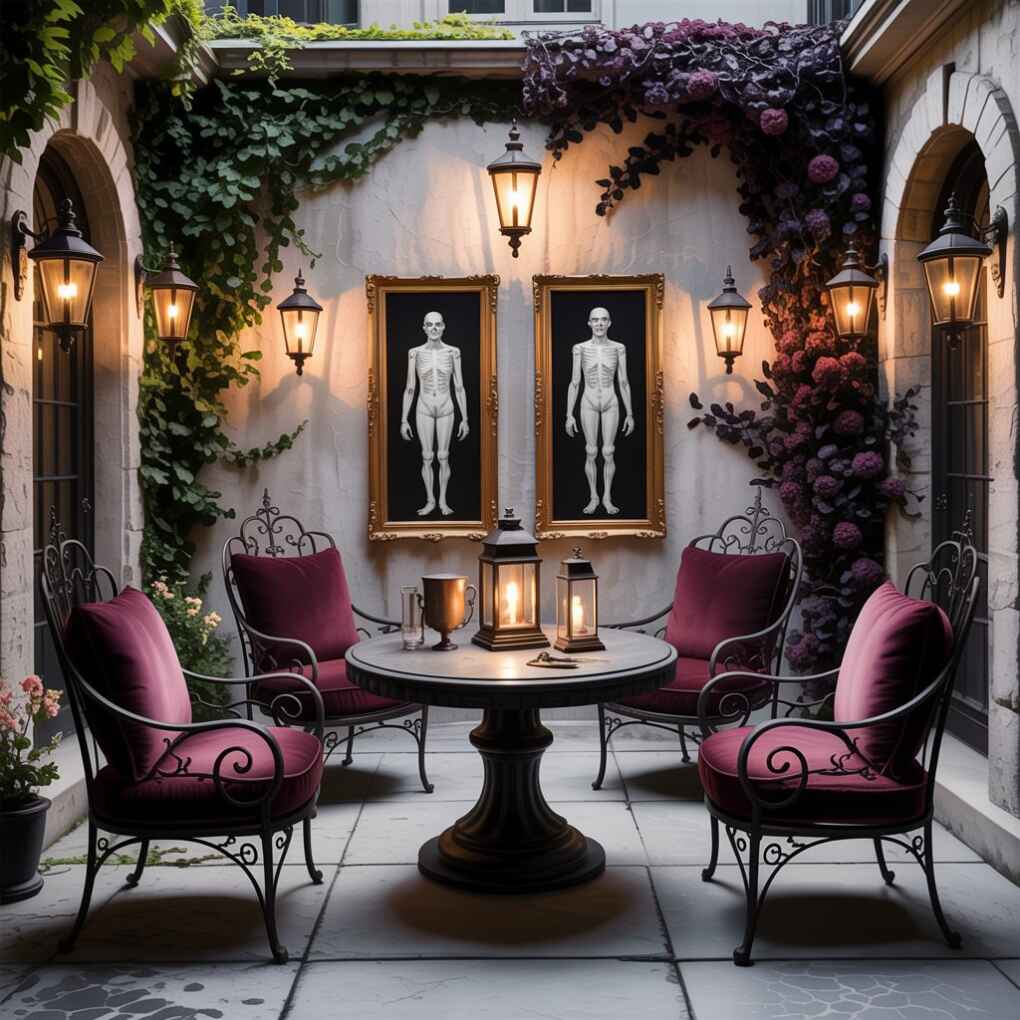
Pro Tip: Frame art in ornate gold or black frames to enhance the gothic aesthetic while providing a cohesive look across different pieces.
8. Antique and Vintage Accessories
Antique accessories add authenticity and history to gothic interiors. Look for vintage keys, old books, hourglasses, or scientific instruments that suggest a storied past. These small touches make the space feel lived-in and collected over time rather than newly decorated.
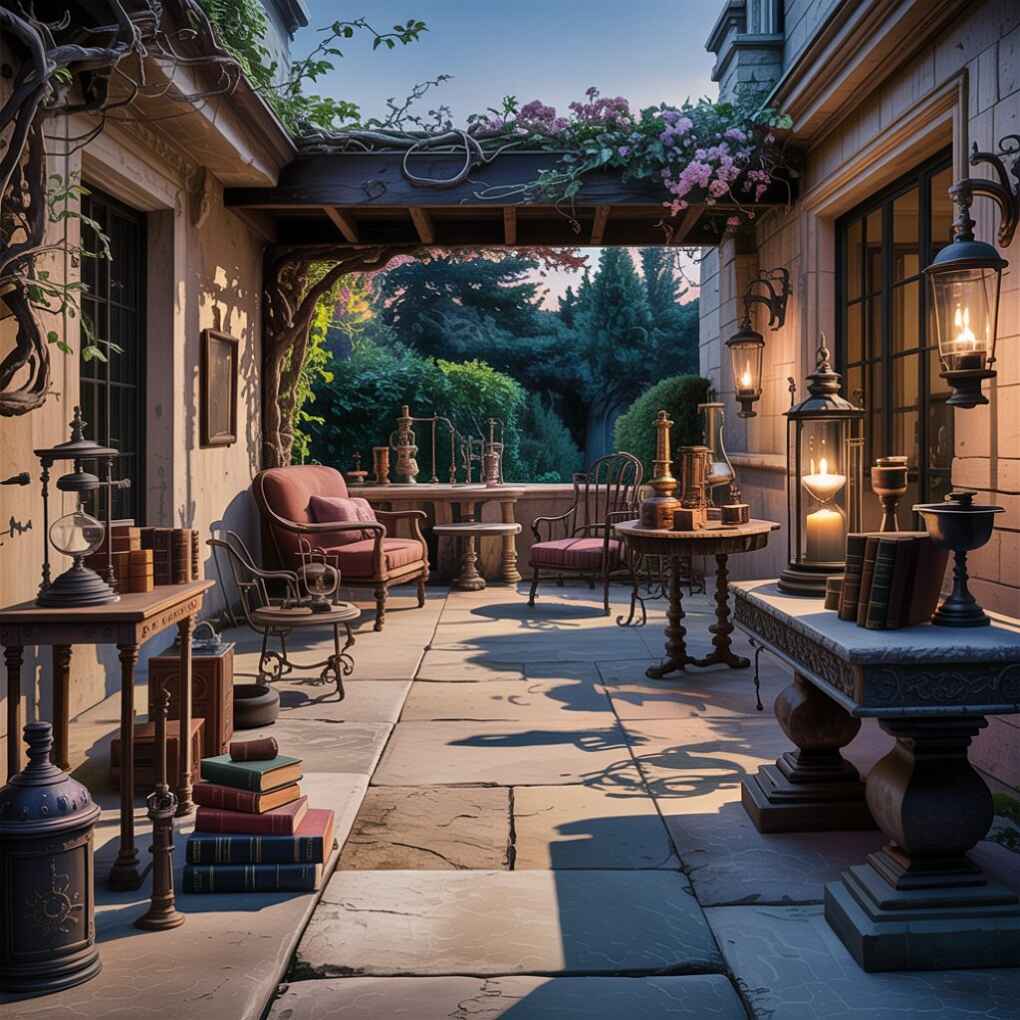
Place these items thoughtfully on shelves, mantels, or side tables. As noted by TheCoolist, “curiosities” arranged in a deliberate but seemingly casual manner create visual interest while telling a subtle narrative. Avoid overcrowding—each piece should have space to be appreciated.
9. Dramatic Textiles and Drapery
Floor-to-ceiling drapes in heavy fabrics like velvet or brocade instantly transform a room’s atmosphere. The dramatic vertical lines and luxurious texture create immediate gothic ambiance while also improving acoustics in modern homes.
Choose fabrics with rich patterns—floral damasks, geometric Gothic designs, or even subtle embroidery. For a contemporary twist, pair heavy drapes with minimalist furniture. The HomeDecorFull guide recommends that “dramatic textiles” are essential for creating the layered depth characteristic of gothic interiors.

Pro Tip: Use double rods to layer sheer fabrics behind heavier drapes—this allows you to control light while maintaining the gothic aesthetic during the day.
10. Gothic-Inspired Plant Life
Contrary to popular belief, plants can enhance gothic interiors when chosen thoughtfully. Opt for dark foliage varieties like black mondo grass, deep purple heuchera, or dramatic architectural plants like bird’s nest ferns.
Place plants in ornate black or wrought iron planters, and consider adding subtle gothic elements like skull-shaped planters for a touch of whimsy. The Rent.com guide suggests that “dark greenery” adds life to gothic spaces without lightening the mood—think of it as the verdant undergrowth of a medieval forest.
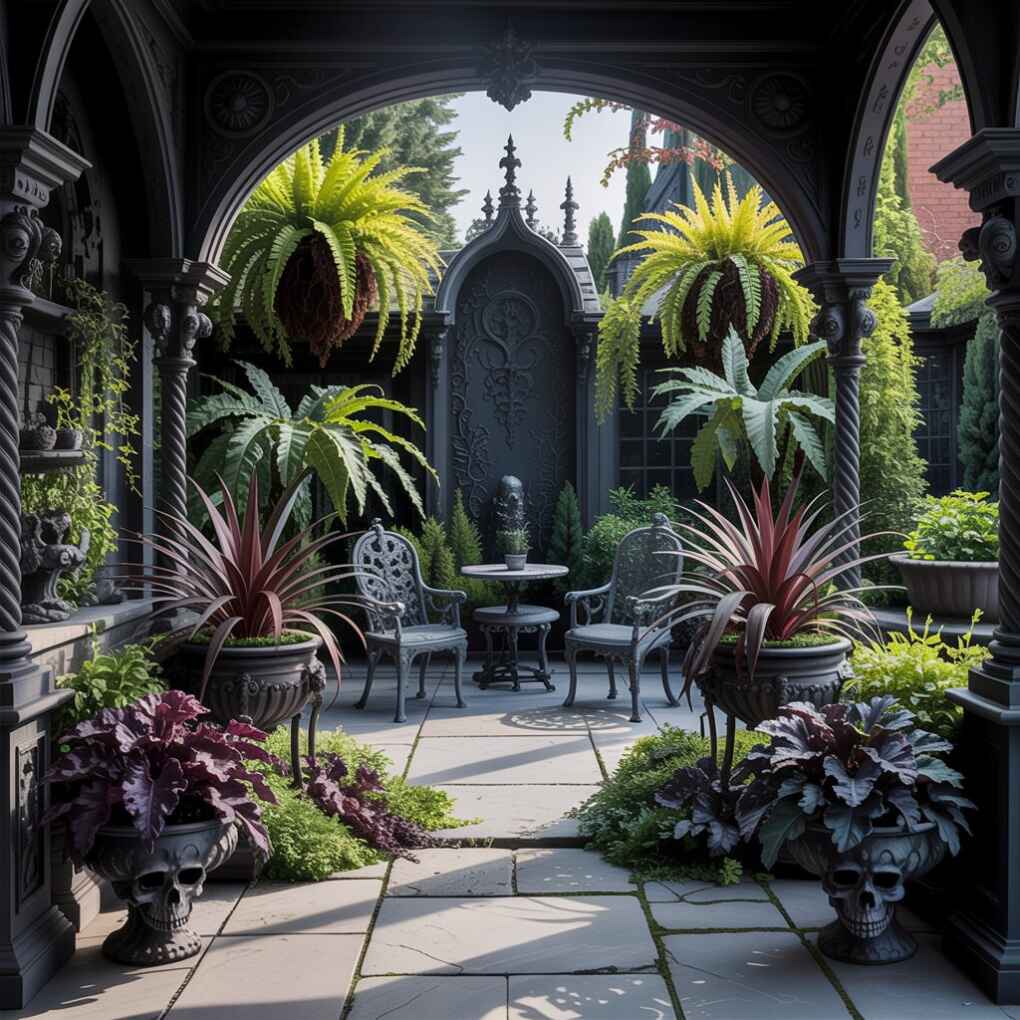
| Plant | Color | Care Level |
|---|---|---|
| Black Mondo Grass | Deep purple/black | Low |
| Bird’s Nest Fern | Dark green | Medium |
| Heuchera ‘Blackout’ | Near-black leaves | Medium |
| Snake Plant | Dark green | Very Low |
11. Mirrors with Ornate Frames
Mirrors serve a dual purpose in gothic design: expanding space and reflecting candlelight to create dramatic effects. Choose mirrors with intricate frames in black, gold, or distressed finishes that complement your overall aesthetic.
Oval or arched mirrors work particularly well for evoking the gothic style. Position them opposite windows to maximize natural light during the day, or place them to reflect your most beautiful lighting fixtures in the evening. The Coolist notes that mirrors create “the illusion of depth” in gothic interiors, making spaces feel larger and more mysterious.

Pro Tip: For an extra gothic touch, consider antique mirrors with slight imperfections that create distorted reflections—a subtle nod to the supernatural without being overt.
12. Metal Accents and Wrought Iron
Wrought iron and other dark metals add structural beauty and historical authenticity to gothic interiors. Look for iron bed frames, side tables, or light fixtures with intricate scrollwork that references medieval craftsmanship.
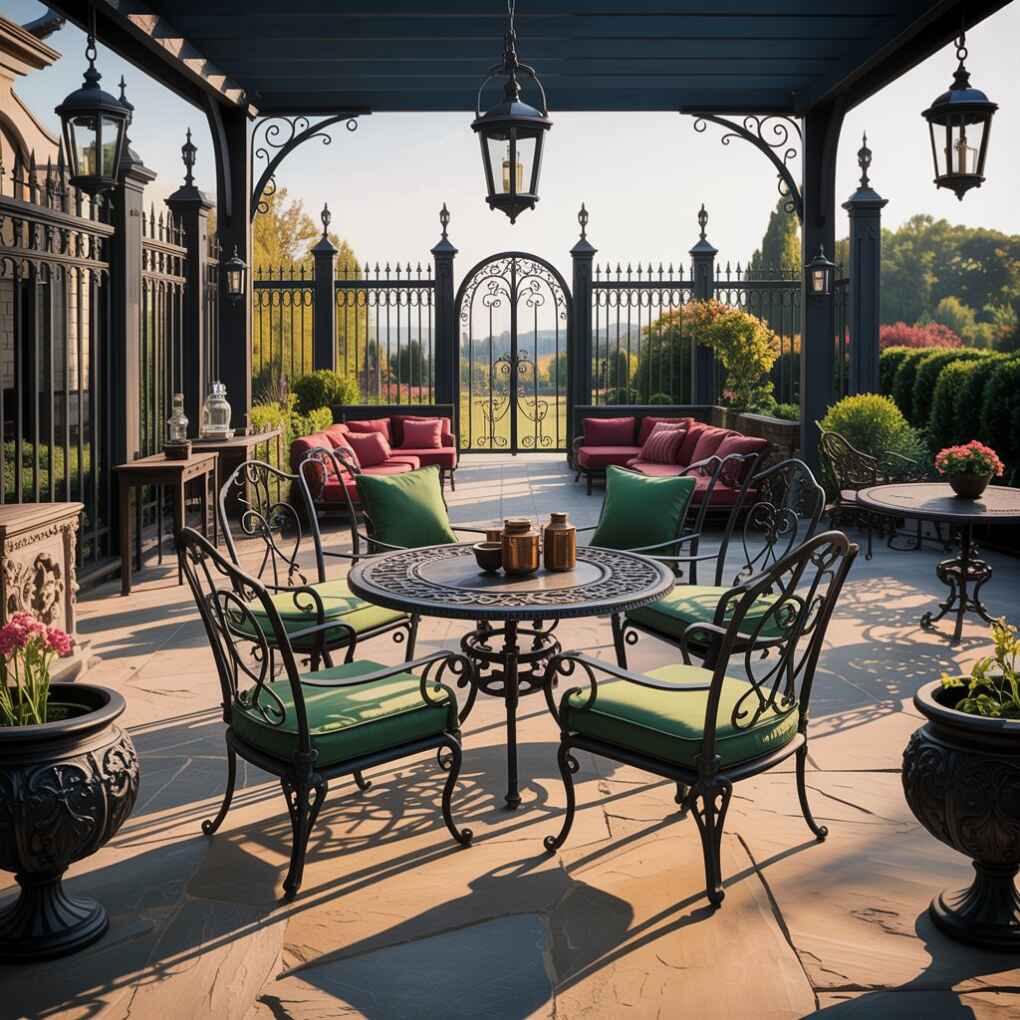
These elements provide contrast against softer textiles while reinforcing the architectural foundation of the style. As the HomeDecorFull guide explains, metal accents “ground the space” in the gothic tradition without overwhelming other design elements. Even small touches like iron door handles or cabinet pulls can make a significant impact.
13. Balanced Contrast with Light Elements
The most sophisticated gothic interiors incorporate strategic touches of light to prevent the space from feeling oppressive. This could mean white trim against dark walls, a light-colored rug on dark flooring, or a single light-colored accent chair in an otherwise dark room.
Architectural Digest emphasizes that the key to modern gothic design is “balance”—using light elements to create visual interest and livability. A room with all-black everything may look striking in a magazine but often proves uncomfortable for daily living. The goal is creating “a space that’s both haunting and sophisticated.”

Pro Tip: Reserve one wall for a lighter color or pattern to create visual breathing room while maintaining the overall gothic aesthetic. This wall can serve as your primary “feature wall” with art and special lighting.
Creating a Cohesive Gothic Narrative
The most successful gothic interiors tell a story through thoughtful curation rather than simply collecting dark-themed items. Each element should feel intentional, creating a narrative that reflects your personal style while honoring the tradition. Consider how your 13 elements work together to create spaces that feel both dramatic and livable.
The Rent.com guide reminds us that gothic design is “definitely bold, to say the least,” but it should never feel like a costume. When done right, your home will exude quiet confidence—the kind that makes guests feel they’ve stepped into a space with depth, history, and soul. This is the true essence of modern gothic design: creating spaces that honor the mysterious and romantic aspects of life while remaining grounded in contemporary comfort.
By thoughtfully incorporating these 13 elements, you’ll create a home that’s not just stylish but deeply personal—a sanctuary where every shadow tells a story and every corner invites discovery. As you refine your gothic interior, remember that the most compelling spaces balance drama with comfort, history with modernity, and darkness with light. Your home should reflect the complexity of your personality—a place where you feel both protected and inspired.
